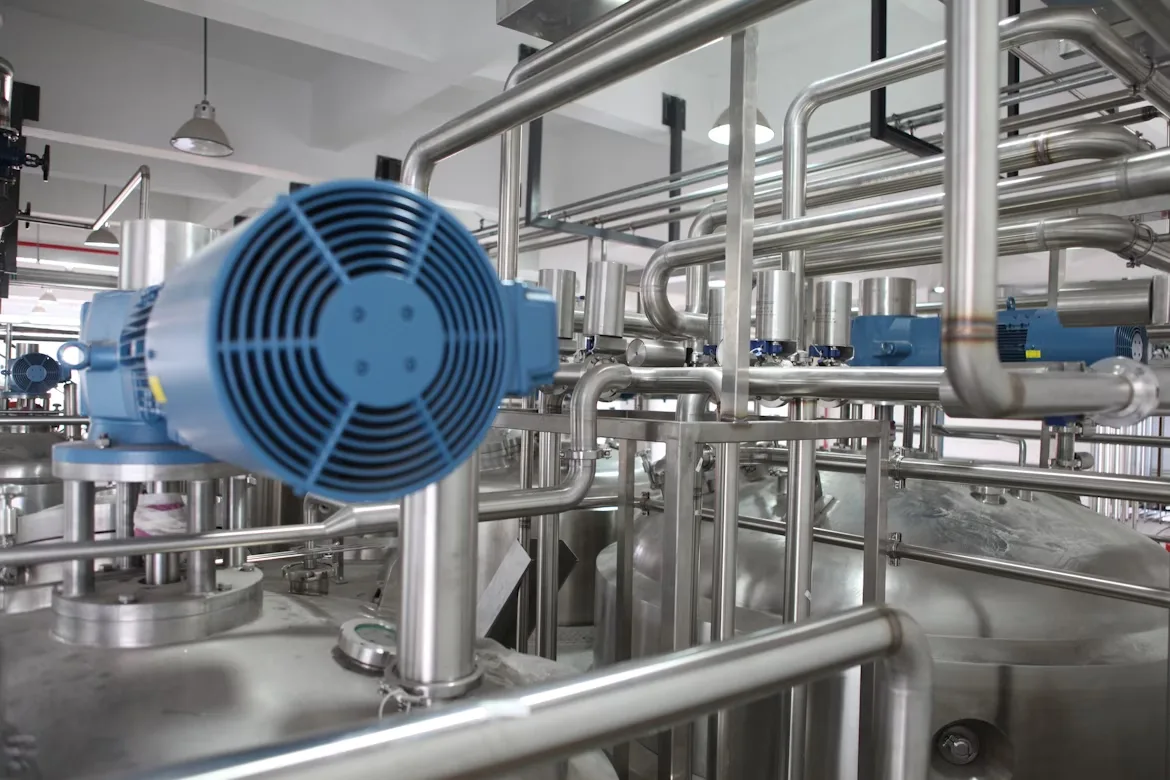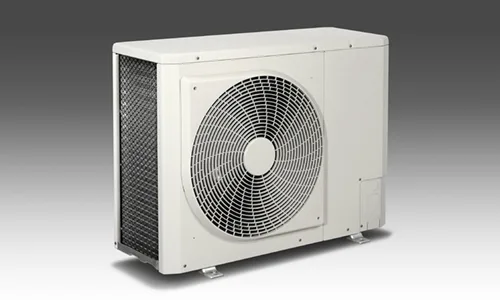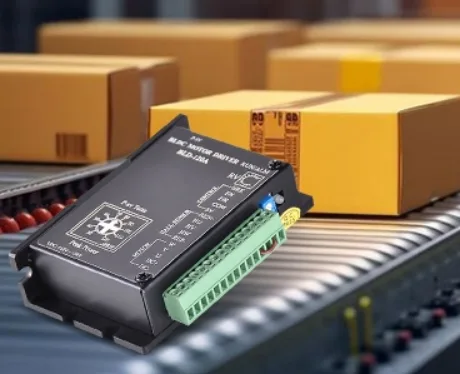You turn on a Chromebook, and it is completely silent. It is impressive that a sleek computer with a processor capable of processing any task doesn’t even emit a sound.
This advancement in thermal management is not just impressive. It is a real breakthrough that is already affecting much more than just computing, and it is affecting how engineers look at 24V BLDC (Brushless DC) fan controllers across applications.
The connection might not be perfect; a computer is not a ceiling fan, an automotive cooling system, or an industrial ventilation system. The connection is in the thermal management techniques found in Chromebooks, which originated from the unforgiving world of portable computing.
At Brushless.com, we take inspiration from the precise, silent, and energy-efficient thermal management found in Chromebooks. These same principles now drive our 24V–72V BLDC motor controllers—bringing advanced cooling performance to HVAC, EV, and industrial systems.
It includes tight power budgets, incredibly thin designs, and silent operation. Those same categories are and will drive more innovation into 24V BLDC fan controllers, which will eventually produce better heat removal in all manners of industries.
Precision Control For Movements Beyond Simple On/Off
For many years, traditional fan control methods were rudimentary, basically on and off or, the best they could do, low or high speed.
Chromebooks can’t use such blunt tools. They have thermal management systems that track temperature sensors distributed throughout the device, and adjust fan speeds precisely and in real-time according to changing cooling requirements.
Inspiration from this kind of mapping is making its way into 24V BLDC controller designs that are taking advantage of advanced Pulse Width Modulation (PWM) or sinusoidal control techniques.
Instead of operating in a few fixed speeds with low or high being the upper or lower limits, these controllers can change the operation of the fan over an almost infinite range of speeds while being directed by the changing thermal conditions.
This means increased cooling capacity when needed, reduced speed when temperatures are stable, and no wasted energy from unnecessary airflow.
The benefits of this precision, from server rooms to smart home ventilation, are cooler temperatures during peak loads and nearly silent conditions during idle conditions, while using little or no energy.
Inspired by Chromebook-level thermal mapping, our engineers have implemented real-time temperature tracking and adaptive PWM modulation in our 24V controllers.
These Brushless.com control algorithms enable precise fan speed regulation—delivering steady airflow in HVAC systems while cutting energy use by up to 30%.
Energy Efficiency Because Every Watt Counts
Chromebooks are extremely power-constrained. There are battery capacity limits measured in watt-hours, and every aspect of the design and every component must justify its power requirement based on performance.
This laser focus on power has led to cooling solutions that yield the highest thermal performance for the lowest amount of required power.
This sort of efficiency-first mentality is changing the design philosophy around the 24V BLDC fan controller.
For example, today’s ceiling fans achieve airflow performance comparable to traditional AC motors, but now consume only 30-35 watts or less, significantly down from 100-110 watts, a drop in power consumption of 40-70%.
For EV battery and inverter cooling, compact 24V BLDC controllers from Brushless.com deliver efficient airflow in tight spaces while minimizing energy draw from the battery pack. These same architectures also enhance HVAC performance, delivering stable, quiet ventilation while cutting energy costs by up to 30%.
In EVs, more efficient BLDC cooling fans directly contribute to extended driving range. When entire ventilation systems adopt these controllers, total power consumption can drop dramatically compared to older, power-hungry AC motor designs.
The extent to which this adds up is incredible. The power savings per unit may not seem very impactful, but across thousands or millions, it all adds up to a substantial energy reduction, operating cost savings, and a more limited environmental impact.
Beyond energy efficiency, modern thermal management also draws lessons from Chromebooks in achieving compact, highly integrated control architectures.
Compact Integration For Less Space
One area where the influence of Chromebooks has been clear is the miniaturization of thermal management controls. Devices barely thicker than a finger on average present a unique challenge to a thermal engineer as it relates to containing efficient thermal management.
By their nature, the improved thermal management that laptops benefit from on Chromebooks includes integrated control circuitry, a power drive stage, and many robust protection capabilities, all packed into a tiny integrated circuit. This push toward integration is changing the landscape of 24V BLDC controller design.
Today’s controller ICs often include capabilities that used to require multiple discrete components: power MOSFETs, gate drivers, current sensing, voltage regulation, and protection diodes. These are all integrated into a single chip.
Built-in protections against overcurrent, over-voltage, under-voltage, and thermal runaway enable designs that ensure the product is reliable without external protection components.
Space savings are not the only advantage. Reduced component counts mean reduced potential failure points, simpler assembly, lower bill-of-material costs, and increased overall performance reliability.
Integrated controllers help modern designs implement advanced technology in applications as varied as compact medical devices and consumer electronics (i.e., automotive for space-constraint purposes).
Industrial and medical cooling systems use Brushless.com’s integrated 24V controllers to save board space and improve reliability in compact enclosures.
Acoustic Perfection To Reduce Noise
If you visit a library or university campus with a lot of Chromebooks, you will notice something extraordinary: quiet. Dozens of computers, all with computationally intensive workloads, yet the acoustics are overlaid with quiet while accomplishing the work.
This is a result of modern motor control techniques optimized for smooth and quiet operation over audible quiet and motor performance differentiation.
Drawing from the same quiet control philosophy that defines Chromebook cooling, Brushless.com engineers have applied advanced low-noise algorithms to 24V BLDC fan controllers. The result is a new generation of controllers that enable silent, efficient airflow for HVAC, EV cooling, and industrial ventilation systems.
The main advancement resides in the commutation method. Trapezoidal control of BLDC electric motors can be implemented quickly, as it is functionally simpler, but the switching noise and resultant torque ripple are often noticeable.
The cooling system of a Chromebook is increasingly utilizing sinusoidal PWM commutation methods that provide even quieter operation and performance for the portable machine.
This emphasis on acoustic control is motivating the advancement of 24V BLDC controllers. Home applications, the ceiling fan in any bedroom, ventilation for a home office, or an HVAC, are optimal for these controllers, being whisper quiet.
Industrial applications where noise is a concern, like recording studios, hospitals, or manufacturing facilities with strict noise criteria, are also adopting these quieter controls.
Smart home ventilation and ceiling fans leverage Brushless.com sinusoidal control for whisper-quiet airflow below 25 dBA.
Sensorless to Simplifying Reliability
Modern designs for Chromebooks are starting to adopt sensorless motor control, eliminating the optional Hall effect sensors normally used to locate the rotor position.
Sensorless motor control uses complex algorithms that interpret motor back-EMF (electromotive force) to determine the rotor position, removing the sensor altogether, leading to fewer components with a higher reliability rate of the mechanical reliability.
Sensorless adoption is becoming more common in 24V BLDC systems, especially with the fact that the prices of implementing a Hall sensor into an application can meet the sensorless benefits.
It is important for the owner or operator to know that hall sensors contribute greatly to the costs of manufacturing, add difficulties in assembling a product, fail more frequently than the rest of the system, and fail to operate under harsh environments.
Applications in dusty, humid, or high-vibration environments can utilize sensorless control to enhance long-term performance durability with the ability to regulate speed precisely. Industrial cabinet fans rely on Brushless.com’s sensorless algorithms to ensure stable operation even in dusty or high-vibration environments.
Smart Connectivity For IoT Advantage
To conclude, the integration of “smart” technology into consumer products, like Chromebooks that offer connectivity, has accompanied advancements in cooling systems.
Increasingly, modern 24V brushless DC (BLDC) fan controllers are being designed with Wi-Fi, Bluetooth, or other forms of connectivity, which allow for remote monitoring and automated scheduling.
Beyond standalone control, these intelligent controllers integrate seamlessly with building and vehicle management systems, providing predictive maintenance, energy optimization, and user-defined configuration that were once impractical with traditional fan controllers.
The sensor-driven, data-oriented decision-making seen in modern computing devices is now applied at the fan-controller level. Whether in HVAC networks, EVs, or smart buildings, Brushless.com controllers connect via CAN, UART, or Wi-Fi to deliver reliable, data-driven performance across applications.
Conclusion
Chromebooks solved some of the toughest thermal management challenges—achieving silent operation, low power use, and efficient cooling in confined spaces. These same design principles are now redefining how engineers approach 24V BLDC controller development across industries.
With the learning of sophisticated control strategies originally developed for portable computing devices, 24V BLDC controller design is ushering into a new era of intelligence, efficiency, and performance. In buildings and vehicles, the quiet revolution of cooling is just beginning.
As part of our motion-control ecosystem, Brushless.com continues to lead the evolution of intelligent 24 V BLDC cooling solutions—where silence meets performance. The quiet revolution in cooling has begun—and we’re at the center of it.




